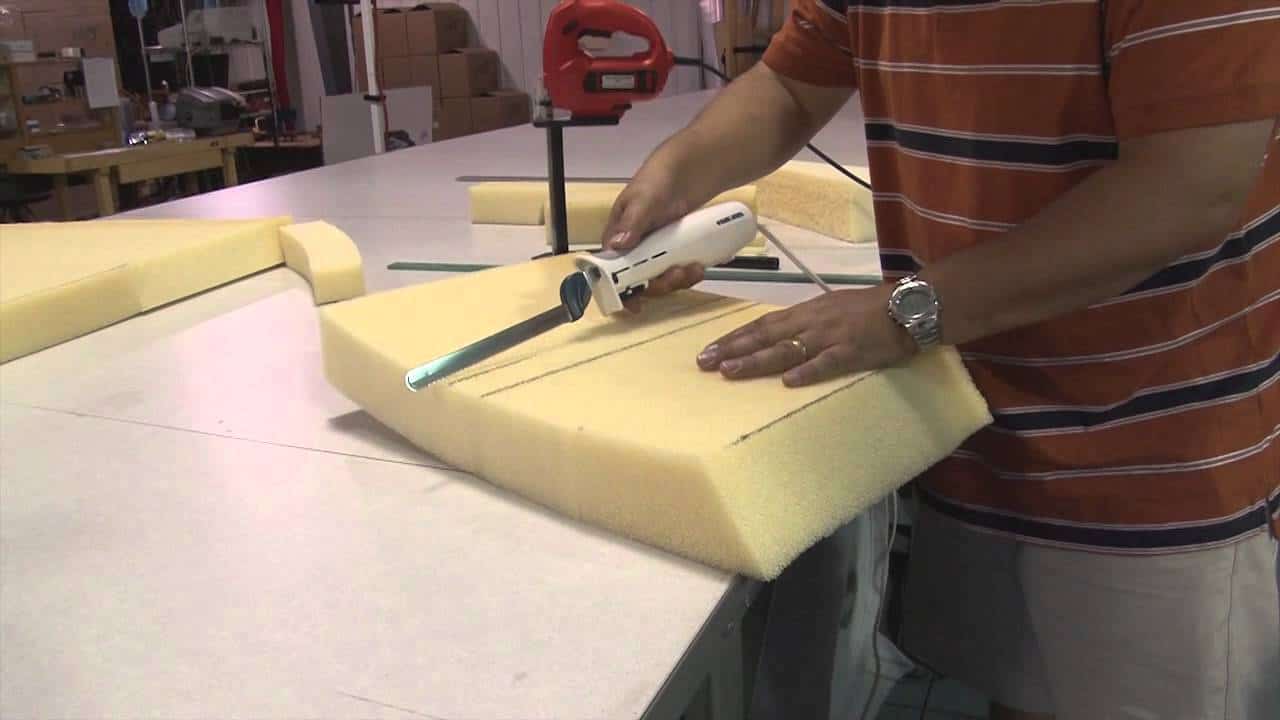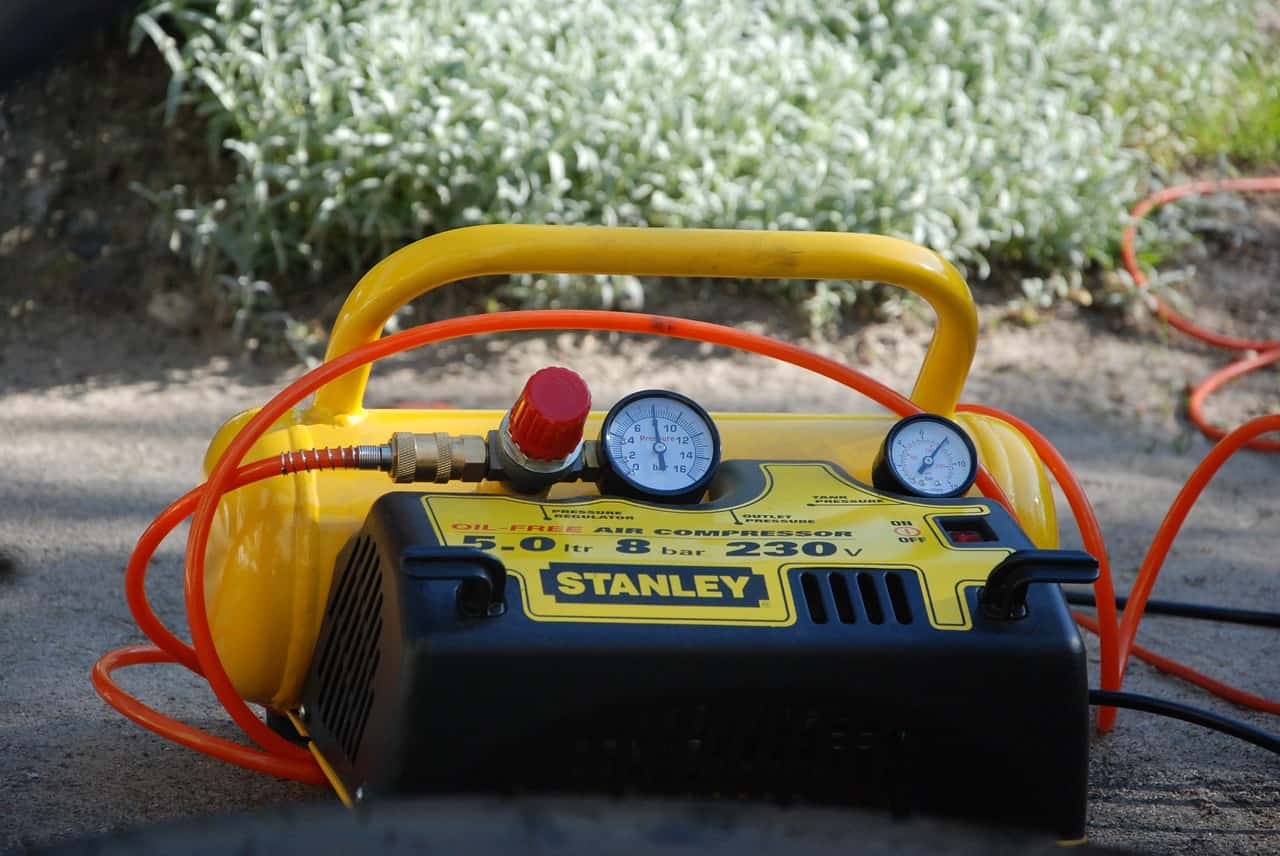The best stud finder can make the difference between a successful and a disastrous DIY house project. When pounding or screwing objects into walls, ceilings, and floors, you need to know what's on the other side. After all, you don't want your large television to fall over because it isn't properly secured to a stud.
The best stud finders are useful to find studs that aren't visible. Knowing where they are is important so you can screw into them instead of the walls when hanging pictures, paintings, mirrors or flat-screen TV mounts.
Precision detection, rapid calibration, and an alert system are all features of the best stud finder. Many stud finders do the same thing. They detect support regions such as studs and joists. All stud finders detect wood, metal for the majority, and active electrical wire for many.
Other stud finders only have rudimentary detection capabilities and are only useful for detecting wall studs. Others can be applied to the walls, floors, and ceilings. Finally, the best stud finders allow you to vary the depth to which the sensors penetrate the wall. Thus, they increase your chances of finding studs and everything that matters.
What Types of Stud Finders are Available?
1. Electronic Stud Finders
Electronic stud finders detect minute changes in the electric field within the wall. The devices can read the density of the wall using these scans. There's a stud if the density reading is high. There is nothing but space if it is low. Advanced settings on specific models allow you to scan for other things in the wall, such as copper piping and wires.
2. Magnetic Stud Finders
Magnetic stud finders work in a more indirect manner. Magnetic finders employ magnets to identify the nails or screws that hold the drywall to the studs rather than sensing the stud itself. A magnetic finder hangs on the wall in the exact location of drywall screws. It allows you to mark it with a pencil without having to use your hands.
This type of metal detector should be used with caution, especially if you are drilling or cutting into the wall. This type of sensor can sometimes misread a pipe or other metal objects inside the wall as a stud. This method requires that the drywall be screwed down in the exact middle of the studs by the constructor. That isn't always the case!
3. Smartphone Stud Finders
There's a third form of stud finder that you're probably already familiar with! Most cellphones feature built-in magnetometers, allowing them to be used as magnetic stud finders. In addition, there are numerous free stud finder apps available for both Apple and Android. Unfortunately, they have the same issues as any magnetic stud detector and are significantly less accurate than electronic stud finders.
Which Type of Stud Finder Should I Buy?
Because there are no electrical parts or batteries to replace, a magnetic detector is less expensive or free if you use a smartphone app. It has a smaller likelihood of breaking. A basic electronic stud finder, on the other hand, is the way to go for the average homeowner. One can cost around $25 and is far more accurate than the magnetic type.
If you settle on an electronic finder, one thing to look for is its depth capacity. It may have a switch that allows you to choose between standard drywall depth and a deep scan of up to 1 1/2" for locating studs through a firewall or two layers of drywall. We have compiled the best stud finders on Amazon for this review to help you find the best stud finder for your home.
What is the best stud finder?
Rank | Product Image | Brand Name | Link |
|---|---|---|---|
1 | |||
2 | |||
3 | |||
4 | |||
5 | |||
6 | |||
7 | |||
8 |
The Best Stud Finder
1. CH Hanson Magnetic Stud Finder
- Small and compact, easily fits in pocket
- Powerful magnets allows hands free use
- 2 way level for ease of marking
- No batteries required. Scan depth: 1 inch. Rotating Level For...
- Soft grip for easy grabbing and gentle touch
A C.H. Hanson magnetic stud finder can locate metal and wood studs in walls using powerful rare earth magnets. Batteries aren't necessary because it employs magnets. A rotating level is included with the stud finder for vertical and horizontal marking. This compact yet powerful tool fits easily into your pocket, ready to assist you with renovation, new buildings, and other DIY jobs.
Pros:
Cons:
2. 4 in 1 Electronic Stud Sensor Wall Detector for Wood Stud and AC Wire
- 4 in 1 Multi-function Stud Finder - Stud Scan,Deep Scan, Metal...
- Digital LED Display and Clear Sound Warning - The large LED...
- Auto-Calibration & Easy to Use - This stud finder would calibrate...
- New Design with Advanced Sensor Technology - This wood metal stud...
- Wide Application & 100% Satisfaction - Easy and simple to use,and...
Tavool stud finder wall detector has an ergonomic design and a huge digital LCD display. It is equipped with powerful sensor technology. It identifies wood/steel studs, joists, pipes, and live electrical wires behind all types of drywall, floors, and ceilings up to 2 inches deep.
It works well on popcorn ceilings, plaster walls, textured surfaces, drywall, and other similar surfaces. It doesn't work on cement boarding walls and brick walls. The four scanning modes (Stud scan, Deep scan, Metal scan, and AC scan) can meet all of your detecting requirements. So take it home and begin your projects with confidence!
Pros:
Cons:
3. 4 in 1 Electric Sensor Wall Scanner for AC Live Wire Detection
- Safe and Reliable. VIVREAL is committed to developing the...
- Four Scanning Modes. VIVREAL stud finder provides four scanning...
- Graphical LCD Display.This multiple-function wall scanner...
- Sound Waring.VIVREAL beam finder offers the beep alert. When you...
- Simple and Fast.The stud finder wall scanner can quickly find the...
You risk causing drywall or flooring damage or damaging the AC wires without the Vivreal stud finder! A good stud finder is essential when working on home tasks that entail hammering or drilling into walls.
Vivreal stud finder is what you need if you're a DIY home projector or a professional contractor. In total, the stud finder has four scanning modes for detection. You can select the desired mode based on the duties you have.
The stud finder does not include a battery for shipping safety reasons. The stud mode can find studs up to 3/4 inches behind the wall. This wall scanner also has a 1.25 in. deep wall scanning mode. Studs with a depth of 38mm Deep mode contain both wood and metal studs.
Pros:
Cons:
4. Walabot DIY Cell Phone Wall Scanner for Studs, Copper Pipe, and Wires
- Not Compatible With Iphone And Ipads And Tablets
- Country Of Origin : China
- Detects Wood & Metal Studs, Pvc & Metal Pipes, Electric Cables...
- Uses Cutting-Edge Radar Technology To See Inside Drywall
Walabot DIY is a cutting-edge wall scanner that pushes the boundaries of stud finder technology. Walabot is the only app that employs cutting-edge radar technology to show you exactly what's behind your walls using your smartphone.
Walabot DIY works with an Android phone to visually depict what's behind drywall up to 4 inches (10 cm) deep. It can display what is on the user's wall in Image mode and Expert mode. Hold the Walabot against the wall, calibrate, and scan the wall to use image mode.
The objects will be analyzed using Walabot's radio frequency technology. Then, it translates the data into visuals that can be identified using artificial intelligence. It detects wooden studs, metal studs, pipes, and wires.
Pros:
Cons:
5. 4 in 1 Electronic Stud Sensor for Wood and AC Live Wire
- ➤The most accurate and higher safety - stud detector is...
- ➤The wall scanner includes five different scanning modes,...
- ➤Auto-calibration and ergonomic grip, comfortable to use,...
- ➤LCD screen upgrade design, display the required stud material...
- ➤Professional Design with Top Quality - FOLAI has been...
The wall detector has a big LCD display, ergonomic design, and multi-sense technology for reliable identification of both metal and wooden studs. It can also detect active wiring in walls up to two inches thick. It's perfect for professionals and home carpenters because of its four scanning modes (stud scan, deep scan, metal scan, and AC scan).
Except for cement board and brick walls, this stud finder can rapidly discover metal studs, joists, pipes, and AC live wire under all types of walls, floors, and ceilings. It is also used on popcorn ceilings, plaster walls, textured surfaces, drywall, etc.
Pros:
Cons:
6. Franklin ProSensor 710+ Professional Stud Finder
- Prosensor 710+ professional stud finder with built-in bubble...
- Small
- Yellow
The Franklin Sensors ProSensor 710 can detect studs using 13 sensors at once. This multi-sense technology eliminates the need for calibration. Multiple studs can be detected simultaneously by the ProSensor 710.
No calibration is required. It displays stud edges and centers, detects wood and metal at the same time. Simply press the button when placed on the wall. LED lights instantly indicate studs.
More sensor pad area than other scanners results in a deeper scan. The triple accuracy technology analyzes and triangulates data from all sensors for the highest accuracy. The built-in bubble level makes it a 2 in 1 tool!
Pros:
Cons:
7. 5 in 1 Electronic Stud for Wood, AC Wire and Metal Studs Detection
- ➤The most accurate and higher safety - stud detector is...
- ➤The wall scanner includes five different scanning modes,...
- ➤Auto-calibration and ergonomic grip, comfortable to use,...
- ➤LCD screen upgrade design, display the required stud material...
- ➤Professional Design with Top Quality - FOLAI has been...
There are three depth stud scanning options in this stud finder. The deepest scan mode scans up to 1.5 inches in depth (38 mm). Employ deep scan mode when there are additional layers for wall panels and panels. Always begin scanning with a 0.5-inch resolution (12.7 mm).
To limit the frequency of false alerts triggered by objects other than studs behind the wall. The wire warning detection indicates the presence of live, unshielded electrical wiring up to 2 inches (51 mm) deep. These wall scanners detect and indicate the live AC wire in all modes for safety.
Pros:
Cons:
8. The StudBuddy Magnetic Stud Finder
- The world's simplest stud finder. Made in the USA
- Works with all drywall applications. Not intended for use on lath...
- Finds wood and metal studs behind drywall by locating nails and...
- No batteries required. Hangs on the wall hands free when studs...
- Hang shelves, cabinets, paintings, mirrors, hooks televisions and...
The StudBuddy is the simplest stud finder on the market. The easy-to-use stud finder can detect metal, nails and screws in wood and metal studs in all drywall applications. There are no batteries, electronic components, or moving parts. It is made in the United States of America.
Pros:
Cons:
How to Choose the Best Stud Finder
1. Number of Sensors
Electronic stud finders have advanced significantly since their introduction to the construction market in the 1990s. An electronic stud finder employs sensors to detect a mass behind the wall to determine the placement of a stud.
They may have a single sensor, allowing them to detect simply the edge of a stud. However, several sensors allow them to detect both the edges and the center of the stud. Stud finders with a single sensor and many sensors both work well on average.
2. Sensor Size
Sensors come in a variety of sizes. Stud finders with larger sensors provide the ability to cover a greater area and penetrate more substantial or thicker walls, such as plaster or concrete.
Smaller sensors have the potential to be extremely accurate. Sensor size isn't an issue for most house DIYers. A standard stud finder with smaller or larger sensors will be able to locate studs under the drywall.
3. Built-in Bubble Level
Built-in bubble levels can be found on either an electronic or a magnetic stud finder. It helps you level shelves or whatever else you're mounting on the wall. However, it only records levels over a relatively limited distance. As a result, small bubble levels are less precise than longer, carpenter-type levels.
4. Built-in Laser Level
A built-in laser is only available on electronic finders. A laser level is an upgrade from a bubble level. You may shine a laser in a straight line from the stud you've located, either vertically or horizontally.
At the touch of a button, the laser level will assist you in aligning additional fasteners. Hanging a picture frame or painting on a wall at the same height is a breeze with a laser level.
5. Depth Adjustment
With depth adjustment, you can go from detecting studs 3/4-inch deep behind drywall to locating any number of objects up to 1-1/2 inches beneath the surface. It is available on electronic models only. Increasing the depth adjustment consumes more energy and depletes the batteries faster.
6. Multipurpose
Electronic "multipurpose" stud finders work by detecting extra elements within the walls. For example, they detect live wires and plastic pipes, so you don't nail or cut into something dangerous.
7. Visual Display
Various visual displays are only available on electronic models. They allow you the option of how you want to see the stud. Some electronic stud finders include an LED screen that displays a digital map of the stud beneath the wall.
Others have LED lights across the top that flash when the finder is passed over a stud. They provide a dependable means to locate a stud.
8. Battery Indicator
A battery indicator will alert you on some electrical models when it's time to replace the batteries. Some electronic models work with AAA or two AA batteries. Others require the use of a small 9-volt battery to power several functions.
Frequently Asked Questions(FAQs)
1. How Do I Use an Electric Stud Finder?
When the stud finder is off, hold it to the wall. You could believe that you need to hit the button before starting, but when you switch it on, the unit calibrates to the wall. Simply attach the gadget to the test wall and switch it on with the button on the side.
If you start your scan on a stud, an error warning will appear. Simply turn it off, move it a few inches to the side, and try again. Move the stud finder in a linear line until it beeps. Once the screen has turned on and been calibrated, slowly slide the stud finder in one direction while keeping the button pressed.
When a stud is identified, it will beep and display an image on the screen. A series of escalating bars are displayed on the screen. The more bars emerge, the closer you are to the stud. The display will fill in once you reach the stud's edge.
Keep in mind that most stud finders only display the stud's perimeter, not the center. Therefore, it is critical that you locate the stud's center. To find the center of the stud, mark the edges of the stud.
First, mark the stud's edge point on the wall with a pencil, then slide the stud finder to the opposite side of the stud. Then, repeat the procedure in the other direction. You've found the other edge of the stud when the stud finder beeps again.
Between those two spots is the center. A stud is typically 1 1/2" wide. Thus, the center will be 3/4". If you don't want to write on your walls, attach a strip of painter's tape to the wall and make your marks there.
Depending on the sort of building you're working on, studs must be 16 or 24 inches apart, according to the building code. Mark the centers of two studs after you've located them, and then measure the distance between them.
You now know the exact distance between each stud in the structure. Simply pick a stud and measure in either direction to discover the additional studs in the wall for the rest of your project.
Builders may set unusual stud locations or use irregular spacing on a short wall. Although this method provides a decent estimate of where the stud should be, you should always double-check using the stud finder.
2. Are Outlets Always Mounted on Studs?
The majority, but not all. Some outlets include boxes that are meant to fit into a hole in the drywall. If this type of outlet box is used, the best stud finder that detects both studs and live wires can alert the user.
3. How Widely Apart are Studs?
The average distance between studs is 16–24 inches, but this isn't always the case. Measure the wall for all studs before hanging picture frames or other objects that require more than one stud.
























